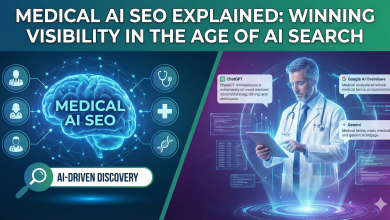
Our healthcare system is at a breaking point. We are facing a perfect storm of immense challenges: an aging population with increasingly complex medical needs, staggering operational costs, and a workforce crisis defined by record levels of burnout and turnover. A chief nursing officer at a recent industry summit put it starkly, noting that 77 million Baby Boomers will soon require more care from a smaller incoming workforce. She stated, “We are at an inflection point. We simply don’t have enough humans to provide the care for humans that need care.”
This isn’t a problem we can hire our way out of. It’s a fundamental supply-and-demand mismatch that requires a paradigm shift in how we deliver care. For years, artificial intelligence was discussed as a futuristic luxury. Today, it’s not just a choice—it’s a demographic and economic necessity. As a growing wave of older adults requires more care, the shortage of the healthcare workforce is only growing, creating an urgent need for new ways to deliver care.
The opportunity presented by AI is not about replacing clinicians; it’s about augmenting them, freeing them from the administrative burdens that consume their time and energy so they can focus on what matters most: the patient. The potential is vast, with key innovations already underway in areas such as clinical documentation, data summarization, decision support, patient engagement, and diagnostic enhancement. AI is no longer on the horizon; it’s here, and it’s the most practical tool we have to build a more efficient, effective, and humane healthcare system.
Where AI Is Making a Tangible Difference Today
For healthcare leaders, the question is no longer if AI will impact care delivery, but how to implement it responsibly and effectively. The most successful applications aren’t high-tech fantasies of fully autonomous robot surgeons; they are practical tools that solve the daily operational headaches draining our most valuable resources: our clinicians’ time and attention.
Taming the Documentation Beast
The administrative burden on clinicians is unsustainable. For every hour of clinical contact, physicians spend two hours on electronic health records (EHRs) and desk work, according to an Annals of Internal Medicine study. This “pajama time”—spent catching up on notes late into the night—is a primary driver of burnout. AI-powered ambient scribes and documentation tools are the most immediate and impactful solution to this problem.
At myLaurel, we help health systems and health plans bring acute and transitional care into the home. We deploy AI tools that transcribe patient-provider conversations from in-home and telehealth visits directly into structured clinician notes, assessments, and orders. This has a dual impact: it drastically reduces documentation time and improves the quality of clinical notes. Similarly, our care managers utilize AI to automatically summarize calls, providing suggested next-best actions and saving an average of 15 minutes per call. This isn’t a small efficiency gain; it is a strategic advantage that gives time back to clinicians, allowing them to see more patients and practice at the top of their license. It’s no surprise that industry leaders predict ambient documentation will be the standard of care within five years.
Optimizing Routes and In-Home Visits
Coordinating care for medically complex patients, especially during transitions from the hospital to the home, is a logistical labyrinth. At myLaurel, we care for an elderly and frail population, with our median patient being 83 years old with six chronic conditions and taking 13 medications. AI is critical to helping us plan and optimize daily routes to ensure a timely response. Our hybrid in-person and virtual care model requires us to coordinate units in the field with available virtual resources to deliver our care. This is further complicated by managing both on-demand and scheduled visits, which can only be handled with sufficient reserve capacity to ensure that patients needing same-day care receive the care they require.
We utilize an AI-scheduling and route optimization system to deploy field units based on predetermined zones. This enables our team to move more quickly and efficiently, ensuring patients receive the necessary support to recover safely at home. When we tested the route optimization in the New Orleans market, we saw our average drive time decrease by nearly 10 minutes per visit. Stacked up over the course of a day or week, it’s a meaningful decrease that creates extra capacity, allowing us to see more patients.
Scaling Patient Interactions
Consistent patient communication is key to preventing readmissions and ensuring adherence to care plans. However, manual outreach is time-consuming and challenging to scale. In early pilots, we’ve observed AI agents handling automated check-in calls for our lower-risk patients during their episode of care. The agent asks scripted, clinically relevant questions, such as, “Are you taking your medication as prescribed?” or “Have you experienced any shortness of breath today?” The AI agent is trained to understand the nuances of a patient’s response. The key is that this is not a fully autonomous system. It is a “human-in-the-loop” model designed to intelligently triage communication. Positive or routine answers are logged, saving our care managers’ valuable time. But any concerning response, ambiguous answer, or non-response is immediately flagged and escalated to a human clinician for direct follow-up. By utilizing AI to handle routine tasks, we enable our clinicians to focus their expertise where it matters most: on patients who require immediate, hands-on intervention.
Navigating the Challenges of Integration
Despite the immense promise, integrating AI into healthcare presents its challenges. We are still in the early stages, and we must proceed with a clear-eyed view of the challenges ahead.
- Regulatory and Privacy Concerns: A high-profile case of an AI-driven misdiagnosis resulting in patient harm is likely inevitable, and such an event will trigger significant regulatory scrutiny. This underscores the non-negotiable need for robust governance structures, ethics committees that include patient representatives, and rigorous security reviews for all AI vendors.
- The Integration Burden: Many health systems suffer from the “Sunday-Monday Problem:” clinicians use seamless, intuitive apps like Uber in their personal lives, only to face clunky, outdated Electronic Medical Records (EMRs) from the 1990s at work. Adding another standalone AI application can worsen this fragmentation. That’s why it’s crucial to prioritize embedding AI into the existing workflow, rather than creating new workarounds.
- The Human in the Loop: We must be vigilant about the “hallucination problem,” where AI models can invent incorrect information. Trust erodes faster than it is earned, especially if hallucinations result in critical medical failures. The solution is not to seek a perfect AI, but to build compound systems that allow a human to easily verify the AI’s output and understand how it reached a conclusion. The goal of AI should be to produce a result that is less biased than the human baseline, creating a net improvement that still relies on human oversight and judgment.
The Path Forward: AI as a Practical Accelerator
The future of healthcare will be defined by our ability to blend the best of human compassion and expertise with the power and scale of artificial intelligence. For many healthcare organizations, AI is already delivering measurable benefits: assessments are faster and more complete, care is timelier, and there’s a significant lift in both patient and staff satisfaction.
AI is not a magic bullet, but it is the most powerful tool we have to solve healthcare’s deep, systemic challenges. It is a practical accelerator for delivering better care that’s smarter and faster. We must encourage and empower more healthcare organizations to thoughtfully integrate these technologies, not as a replacement for human connection, but as the engine that preserves and enhances it. By doing so, we can finally begin to deliver on the promise of extraordinary care for everyone, wherever they are.



